Youngsung Kim
Standard Neural Computation Alone Is Insufficient for Logical Intelligence
Feb 04, 2025


Abstract:Neural networks, as currently designed, fall short of achieving true logical intelligence. Modern AI models rely on standard neural computation-inner-product-based transformations and nonlinear activations-to approximate patterns from data. While effective for inductive learning, this architecture lacks the structural guarantees necessary for deductive inference and logical consistency. As a result, deep networks struggle with rule-based reasoning, structured generalization, and interpretability without extensive post-hoc modifications. This position paper argues that standard neural layers must be fundamentally rethought to integrate logical reasoning. We advocate for Logical Neural Units (LNUs)-modular components that embed differentiable approximations of logical operations (e.g., AND, OR, NOT) directly within neural architectures. We critique existing neurosymbolic approaches, highlight the limitations of standard neural computation for logical inference, and present LNUs as a necessary paradigm shift in AI. Finally, we outline a roadmap for implementation, discussing theoretical foundations, architectural integration, and key challenges for future research.
Towards Narrowing the Generalization Gap in Deep Boolean Networks
Sep 06, 2024
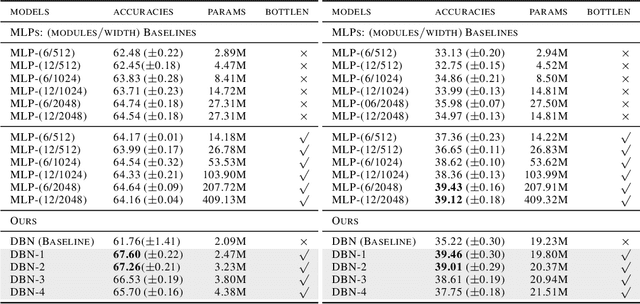

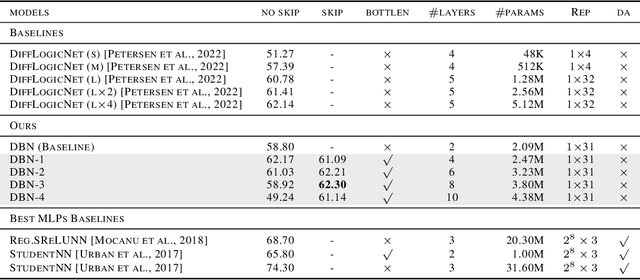
Abstract:The rapid growth of the size and complexity in deep neural networks has sharply increased computational demands, challenging their efficient deployment in real-world scenarios. Boolean networks, constructed with logic gates, offer a hardware-friendly alternative that could enable more efficient implementation. However, their ability to match the performance of traditional networks has remained uncertain. This paper explores strategies to enhance deep Boolean networks with the aim of surpassing their traditional counterparts. We propose novel methods, including logical skip connections and spatiality preserving sampling, and validate them on vision tasks using widely adopted datasets, demonstrating significant improvement over existing approaches. Our analysis shows how deep Boolean networks can maintain high performance while minimizing computational costs through 1-bit logic operations. These findings suggest that Boolean networks are a promising direction for efficient, high-performance deep learning models, with significant potential for advancing hardware-accelerated AI applications.
ProtoFL: Unsupervised Federated Learning via Prototypical Distillation
Aug 08, 2023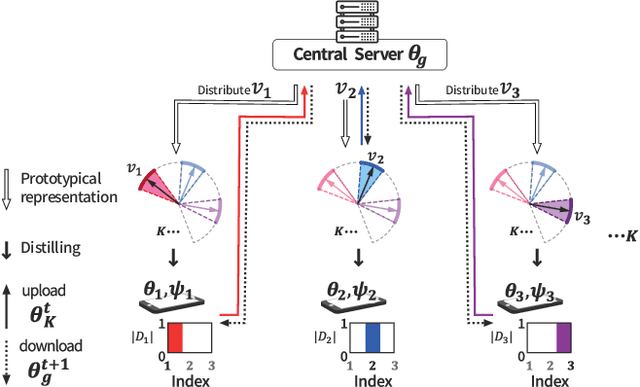
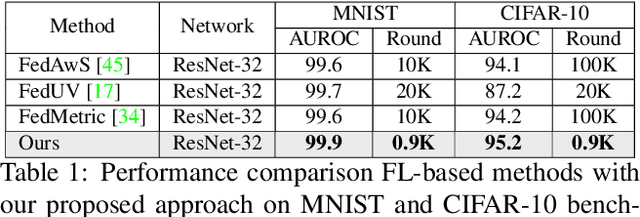
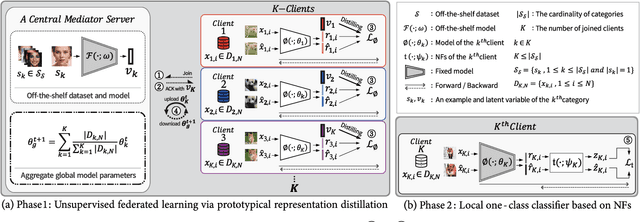

Abstract:Federated learning (FL) is a promising approach for enhancing data privacy preservation, particularly for authentication systems. However, limited round communications, scarce representation, and scalability pose significant challenges to its deployment, hindering its full potential. In this paper, we propose 'ProtoFL', Prototypical Representation Distillation based unsupervised Federated Learning to enhance the representation power of a global model and reduce round communication costs. Additionally, we introduce a local one-class classifier based on normalizing flows to improve performance with limited data. Our study represents the first investigation of using FL to improve one-class classification performance. We conduct extensive experiments on five widely used benchmarks, namely MNIST, CIFAR-10, CIFAR-100, ImageNet-30, and Keystroke-Dynamics, to demonstrate the superior performance of our proposed framework over previous methods in the literature.
Connecting Sphere Manifolds Hierarchically for Regularization
Jun 25, 2021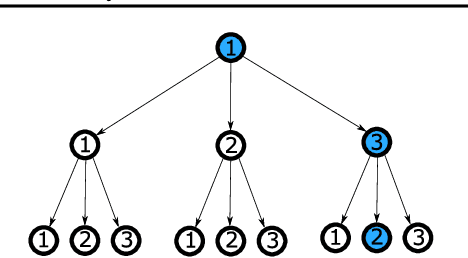
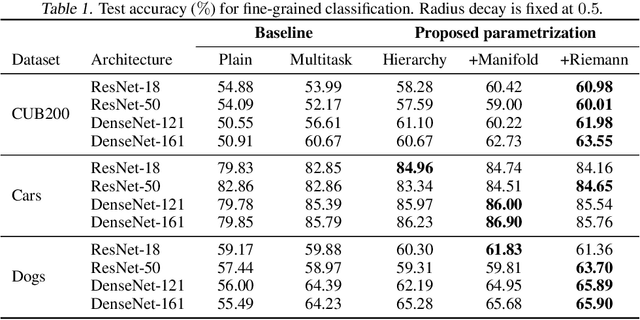
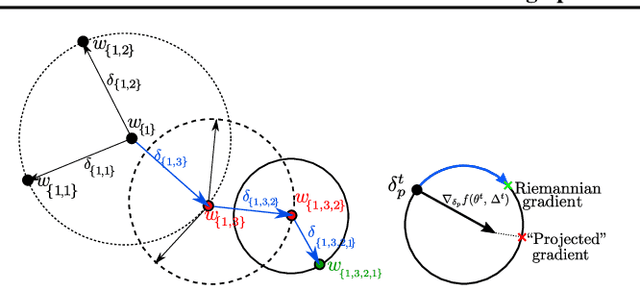
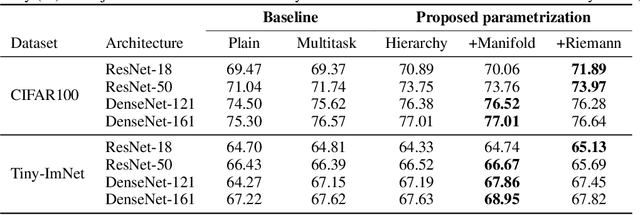
Abstract:This paper considers classification problems with hierarchically organized classes. We force the classifier (hyperplane) of each class to belong to a sphere manifold, whose center is the classifier of its super-class. Then, individual sphere manifolds are connected based on their hierarchical relations. Our technique replaces the last layer of a neural network by combining a spherical fully-connected layer with a hierarchical layer. This regularization is shown to improve the performance of widely used deep neural network architectures (ResNet and DenseNet) on publicly available datasets (CIFAR100, CUB200, Stanford dogs, Stanford cars, and Tiny-ImageNet).
Few-shot Visual Reasoning with Meta-analogical Contrastive Learning
Jul 23, 2020

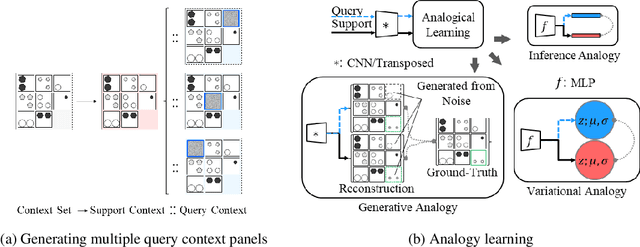
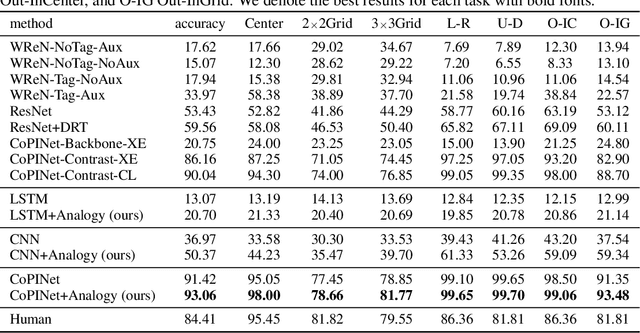
Abstract:While humans can solve a visual puzzle that requires logical reasoning by observing only few samples, it would require training over large amount of data for state-of-the-art deep reasoning models to obtain similar performance on the same task. In this work, we propose to solve such a few-shot (or low-shot) visual reasoning problem, by resorting to analogical reasoning, which is a unique human ability to identify structural or relational similarity between two sets. Specifically, given training and test sets that contain the same type of visual reasoning problems, we extract the structural relationships between elements in both domains, and enforce them to be as similar as possible with analogical learning. We repeatedly apply this process with slightly modified queries of the same problem under the assumption that it does not affect the relationship between a training and a test sample. This allows to learn the relational similarity between the two samples in an effective manner even with a single pair of samples. We validate our method on RAVEN dataset, on which it outperforms state-of-the-art method, with larger gains when the training data is scarce. We further meta-learn our analogical contrastive learning model over the same tasks with diverse attributes, and show that it generalizes to the same visual reasoning problem with unseen attributes.
Deep generative-contrastive networks for facial expression recognition
Oct 25, 2018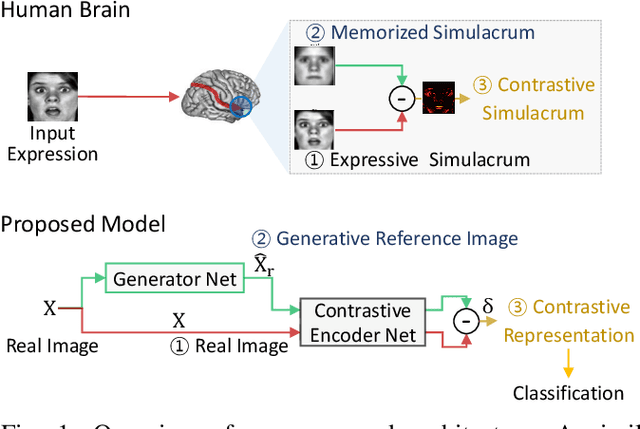
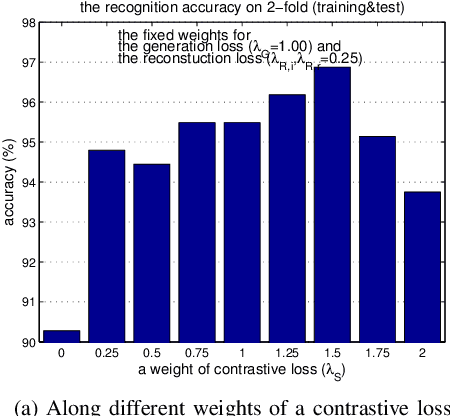

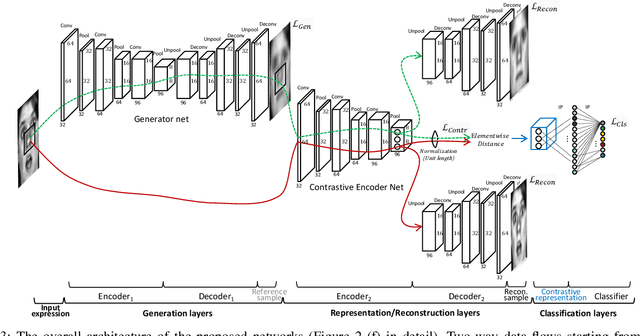
Abstract:As the expressive depth of an emotional face differs with individuals or expressions, recognizing an expression using a single facial image at a moment is difficult. A relative expression of a query face compared to a reference face might alleviate this difficulty. In this paper, we propose to utilize contrastive representation that embeds a distinctive expressive factor for a discriminative purpose. The contrastive representation is calculated at the embedding layer of deep networks by comparing a given (query) image with the reference image. We attempt to utilize a generative reference image that is estimated based on the given image. Consequently, we deploy deep neural networks that embed a combination of a generative model, a contrastive model, and a discriminative model with an end-to-end training manner. In our proposed networks, we attempt to disentangle a facial expressive factor in two steps including learning of a generator network and a contrastive encoder network. We conducted extensive experiments on publicly available face expression databases (CK+, MMI, Oulu-CASIA, and in-the-wild databases) that have been widely adopted in the recent literatures. The proposed method outperforms the known state-of-the art methods in terms of the recognition accuracy.
 Add to Chrome
Add to Chrome Add to Firefox
Add to Firefox Add to Edge
Add to Edge